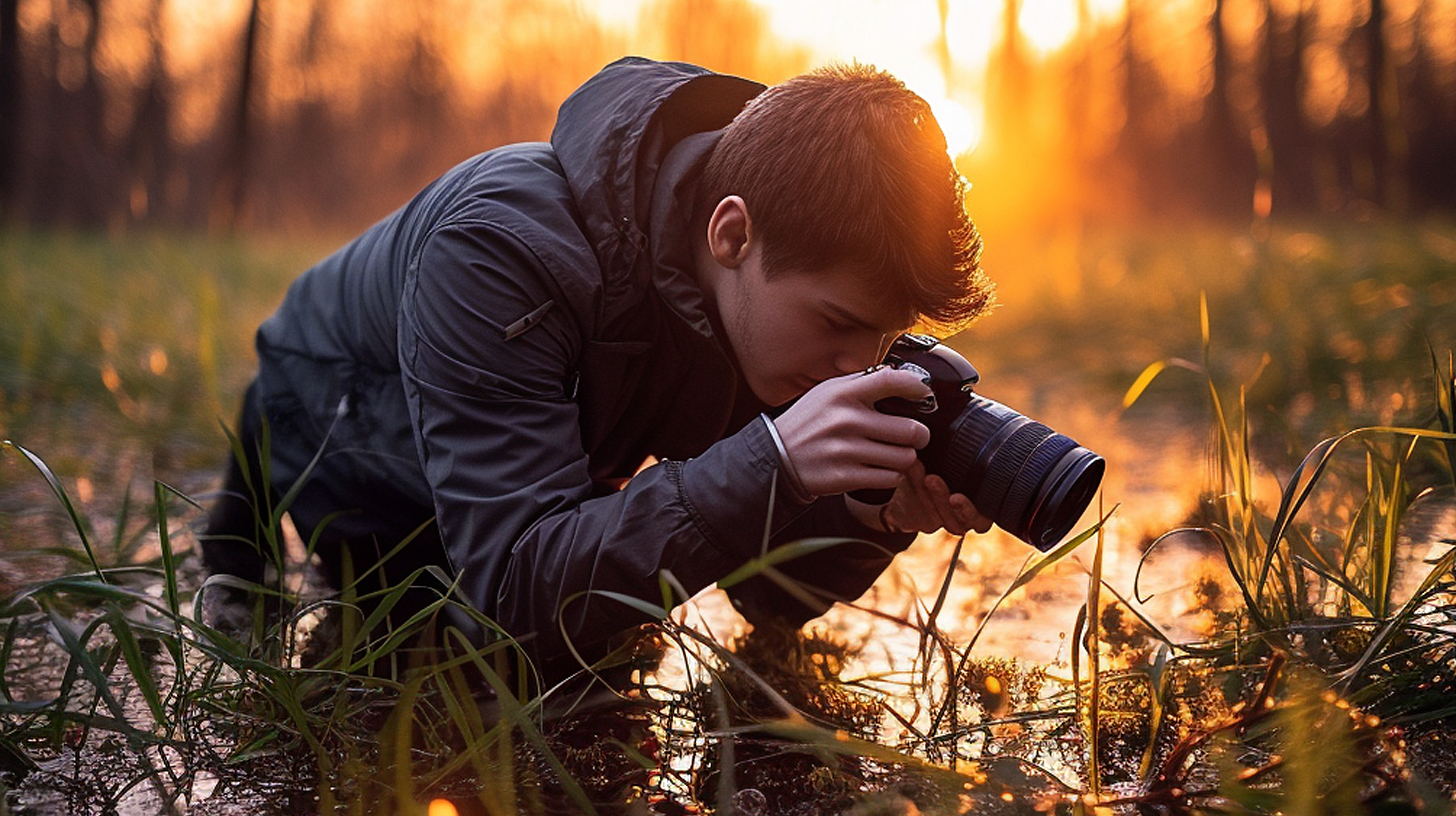Travel photography is an exciting way to capture memories and share experiences with others. To excel in this field, it’s essential to grasp the fundamentals. First, familiarize yourself with your camera’s settings, including aperture, shutter speed, and ISO. These elements work together to control exposure and create the desired effect in your images.
Composition techniques play a crucial role in travel photography. The rule of thirds, leading lines, and framing are just a few methods to enhance your photos’ visual appeal. Experiment with different angles and perspectives to add depth and interest to your shots.
Lighting is another critical aspect of travel photography. Natural light can be your best friend, especially during the golden hours of sunrise and sunset. However, learning to work with challenging lighting conditions, such as harsh midday sun or low-light situations, will greatly improve your versatility as a photographer.
Don’t forget to consider the story you want to tell through your images. Capture not just landmarks, but also local culture, people, and details that make each destination unique. By mastering these travel photography fundamentals, you’ll be well-equipped to document your journeys in a compelling and visually stunning manner.
Essential Gear for the Traveling Photographer
When embarking on a photography adventure, having the right gear can make all the difference in capturing stunning images. A versatile, lightweight camera is essential for travel photography, with mirrorless options gaining popularity due to their compact size and impressive image quality. Consider investing in a weather-sealed body to protect your equipment from the elements.
A selection of lenses is crucial for diverse shooting scenarios. A wide-angle lens is perfect for landscapes and architecture, while a telephoto lens allows you to capture wildlife and distant subjects. For versatility, a good quality zoom lens can cover multiple focal lengths without the need to switch lenses frequently.
Lightweight tripods are indispensable for travel photographers, enabling sharp images in low light conditions and allowing for creative long-exposure shots. Look for carbon fiber models that offer stability without adding excessive weight to your bag.
Don’t forget essential camera accessories like extra batteries, memory cards, and a reliable camera bag to protect your gear. A portable external hard drive or cloud storage solution is vital for backing up your precious images while on the go.
Lastly, consider packing a few filters, such as polarizers and neutral density filters, to enhance your creative possibilities and tackle challenging lighting situations. With this carefully curated set of equipment, you’ll be well-prepared to capture memorable moments on your photographic journey.
Capturing the Essence of a Destination
When it comes to travel photography, the goal is to encapsulate the spirit of a place through your lens. This involves a multi-faceted approach that combines various photography techniques and subjects.
Street photography is an excellent way to document local culture. Candid shots of people going about their daily lives can provide authentic glimpses into the destination’s heart. Remember to be respectful and, when possible, ask for permission before taking close-up portraits.
Landscape photography allows you to showcase the natural beauty of a location. Use techniques like the rule of thirds and leading lines to create compelling compositions. Don’t forget to experiment with different times of day – golden hour can transform an ordinary scene into something magical.
Architectural photography is crucial for capturing man-made wonders. When photographing buildings, pay attention to symmetry, patterns, and unique design elements. Wide-angle lenses can be particularly useful for capturing expansive structures or interiors.
To truly represent a destination, aim for a mix of wide shots that set the scene and close-ups that highlight interesting details. By combining these different aspects – people, nature, and architecture – you’ll be able to create a comprehensive visual story that captures the essence of your destination.
Mastering Challenging Lighting Conditions
Mastering challenging lighting conditions is essential for photographers looking to elevate their craft. One of the most coveted times for shooting is during the golden hour, which occurs shortly after sunrise or before sunset. This magical period bathes subjects in warm, soft light, creating stunning images with long shadows and rich colors.
Low light photography presents its own set of challenges, but with the right techniques, it can yield dramatic results. Increasing your ISO, using a wider aperture, and employing a tripod for longer exposures are key strategies for capturing clear, well-exposed images in dim settings.
Harsh sunlight, often considered unfavorable for photography, can be tamed with a few simple tricks. Look for natural shade, use a diffuser, or position your subject to create interesting shadows. Alternatively, embrace the contrast and create bold, high-impact images.
Night photography while traveling offers unique opportunities to capture cityscapes, star trails, and local nightlife. Pack a sturdy tripod, experiment with long exposures, and don’t be afraid to push your camera’s ISO capabilities. Remember to scout locations during daylight hours for safety and composition planning.
By mastering these various lighting conditions, photographers can expand their creative possibilities and capture compelling images in any situation.
Storytelling Through Your Travel Images
Storytelling through travel images is a powerful way to share your adventures and captivate your audience. Photo essays and visual narratives allow you to convey the essence of your journey beyond mere snapshots. To create a compelling travel album, start by carefully sequencing your photos to guide viewers through your experience chronologically or thematically.
When curating your images, focus on creating a cohesive narrative that showcases the highlights of your trip while also capturing the smaller, intimate moments that bring your story to life. Consider including a mix of wide landscape shots, close-up details, and candid portraits to provide a well-rounded perspective of your travels.
Pay attention to the visual flow of your album by arranging photos with complementary colors, compositions, or subjects. This approach will help maintain viewer interest and create a seamless viewing experience. Remember that each image should contribute to the overall story, so be selective in your choices and avoid redundancy.
By mastering the art of visual storytelling, you can transform your travel photos into a captivating narrative that transports viewers to the heart of your adventures.
Post-Processing Tips for Travel Photography
Post-processing is a crucial step in travel photography that can elevate your images from good to stunning. When editing travel photos, start by importing your RAW files into a professional editing software for maximum flexibility. Color correction is essential to capture the true essence of your destination, so adjust white balance and saturation to reflect the scene accurately.
RAW processing allows you to recover details in highlights and shadows, which is particularly useful for high-contrast scenes often encountered during travels. Pay attention to straightening horizons and correcting lens distortions to create polished, professional-looking images.
For on-the-go editing, mobile editing apps for travelers offer powerful tools right at your fingertips. Apps like Snapseed, VSCO, and Lightroom Mobile provide advanced features such as selective adjustments, preset filters, and even RAW processing capabilities. These apps enable you to quickly enhance and share your travel memories while still on the road.
Remember, the goal of post-processing is to enhance your travel photos, not to completely alter reality. Strive for a balance between creativity and authenticity to truly capture the spirit of your adventures.
Ethical Considerations in Travel Photography
When engaging in travel photography, it’s crucial to consider the ethical implications of our actions. Respecting local customs is paramount; what may seem like an innocent photo opportunity to us could be deeply offensive or sacred to the local community. Always take the time to research and understand the cultural norms of your destination.
Asking for permission before photographing individuals is not only courteous but often legally required in many countries. This simple act of respect can lead to more meaningful interactions and potentially better photographs. Remember, a person’s image is their property, and they have the right to decline being photographed.
Responsible wildlife photography is another critical aspect of ethical travel photography. Maintain a safe distance from animals, avoid disturbing their natural habitats, and never bait or provoke them for the sake of a shot. The welfare of the wildlife should always take precedence over getting the perfect picture.
Cultural sensitivity extends beyond just taking photos. Be mindful of how you present and share your images on social media and other platforms. Avoid perpetuating stereotypes or presenting a one-dimensional view of a culture or place.
By adhering to these ethical guidelines, we can ensure that our passion for photography doesn’t come at the expense of the people, wildlife, and places we encounter in our travels.
Monetizing Your Travel Photography
Monetizing your travel photography can be a rewarding way to turn your passion into a profitable venture. One of the most popular methods is selling your images through stock photography websites, which allow photographers to upload their work and earn royalties when customers purchase licenses to use their photos. To maximize your earnings, focus on capturing unique perspectives and in-demand subjects that are currently trending in the market.
Another avenue for monetization is licensing your images directly to businesses, publications, or individuals. This approach often yields higher returns per image but requires more effort in marketing and client relations. Consider creating a professional portfolio website to showcase your best work and attract potential buyers.
Diversifying your income streams is crucial in the travel photography business. You might explore opportunities such as leading photography tours, creating and selling photography tutorials, or offering prints of your most popular images. Additionally, partnering with travel brands or tourism boards can provide both income and exposure for your work.
Remember that success in monetizing travel photography requires not only exceptional images but also strong business acumen. Invest time in learning about copyright laws, pricing strategies, and marketing techniques to ensure you’re maximizing the value of your photographic assets.
Elevating Your Travel Photography to the Next Level
As we wrap up our journey through the world of travel photography, it’s clear that this art form is about more than just capturing images—it’s about telling stories, preserving memories, and sharing unique perspectives of the world around us. By implementing the techniques and tips discussed throughout this guide, you can significantly enhance your travel photography skills.
Remember, great travel photography is a combination of technical proficiency, creative vision, and a genuine curiosity about the places and people you encounter. Don’t be afraid to experiment with different styles, compositions, and subjects. Each photograph you take is an opportunity to learn and grow as a photographer.
Lastly, while it’s important to strive for improvement, don’t forget to enjoy the process. Travel photography should enhance your experiences, not detract from them. Take time to immerse yourself in the moment, connect with your surroundings, and let your passion for both travel and photography shine through in your work.
With practice, patience, and persistence, you’ll find your unique voice as a travel photographer and create images that not only document your journeys but also inspire others to explore the world. So pack your camera, embark on your next adventure, and start capturing the beauty of the world one frame at a time.










